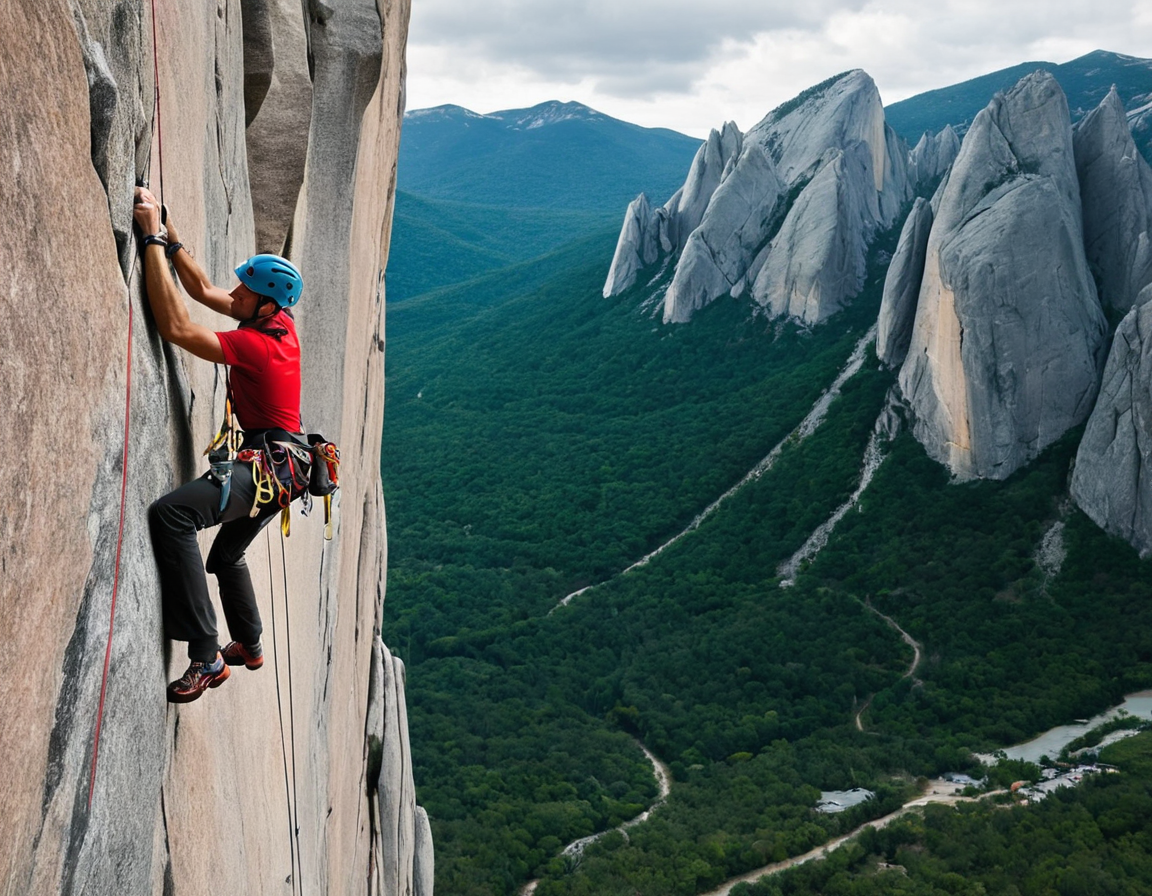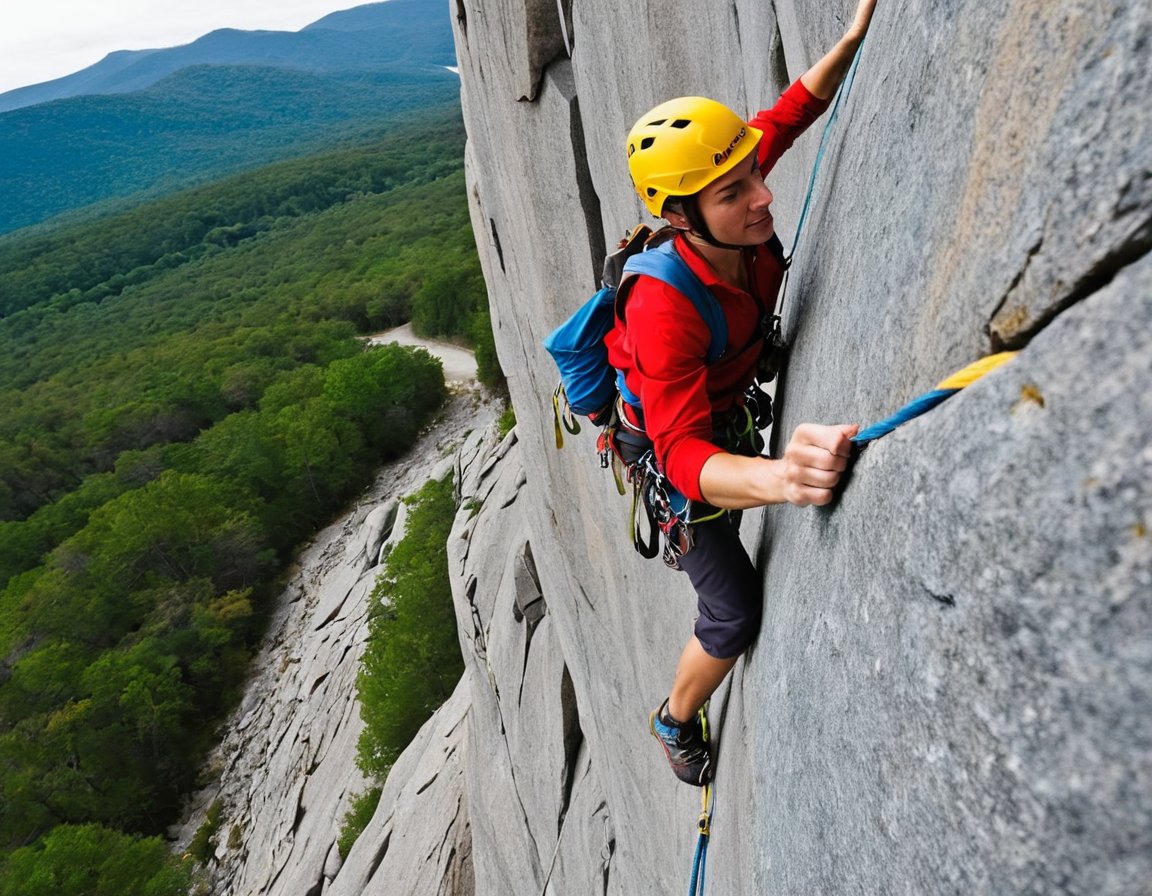: Embrace the Heights: A Thrilling Guide to Rock Climbing

Welcome adventure seekers! If you’re looking for a thrill that combines mental, physical, and visual stimulation, rock climbing might just be your perfect match. This exhilarating sport not only challenges your strength but also pushes your mind to overcome fear and push boundaries. In this guide, we will delve into the fascinating world of rock climbing, sharing tips for beginners and seasoned climbers alike.
**A Brief History of Rock Climbing**
Rock climbing has its roots in mountaineering, with early forms dating back to the 1700s when mountain explorers used primitive techniques to scale peaks. As a sport, however, rock climbing gained traction in the mid-20th century, and since then, it has evolved into numerous disciplines – from bouldering to sport climbing to traditional (trad) climbing. Today, this diverse activity attracts millions worldwide, inspiring new climbers every day with its unique blend of challenge, beauty, and community.
**Choosing Your Climbing Style: Bouldering vs Sport Climbing vs Trad Climbing**
Bouldering: This discipline involves short problems (routes) close to the ground without ropes or harnesses. It’s an excellent way for beginners to learn and build strength, as it requires more muscle engagement per movement than other climbing styles. Moreover, boulder problems often demand problem-solving skills, making it a mental workout too!
Sport Climbing: This style uses permanent bolts drilled into the rock for protection while climbing. Sport climbs are typically shorter routes with fewer technical challenges compared to traditional climbing but require immense strength and endurance. If you’re looking for fast-paced, adrenaline-filled fun, sport climbing might be your ideal match!
Trad Climbing: Involving self-placed removable protection (cams, nuts), trad climbing tests your problem-solving skills and relies on sound decision making. This discipline often leads climbers to explore remote areas, discovering new routes in the process. If you’re drawn to exploration and adventure, traditional climbing could be your calling.
**Gearing Up: Essential Climbing Equipment**
Aside from selecting a suitable climbing style, having the right gear is crucial for both safety and enjoyment. Here are some essential items every climber should have:
1. Harness – A comfortable yet supportive harness will distribute weight evenly across your body while belaying or rappelling. Learn more about the
2. Helmet – Protect yourself from falling rocks or potential falls by wearing a well-fitting climbing helmet.
3. Climbing Shoes – Specialized footwear designed to grip small edges and pockets on the rock, enhancing performance and safety.
4. Chalk Bag & Chalk – Sweaty hands can be detrimental when trying to maintain a firm grip. A chalk bag filled with magnesium carbonate (chalk) helps absorb sweat and provides better friction on holds.
5. Belay Device, Carabiners, & Rope – These are essential for managing the rope while belaying or rappelling. Look for high-quality gear certified by reputable organizations like UIAA or CE.
6. Quickdraws (for Sport Climbing) – Lightweight devices that connect your climbing rope to bolts placed in the rock, ensuring safe progression up a sport route.
7. Camming Devices & Nuts (for Trad Climbing) – Removable protection devices used for traditional climbing, designed to be wedged into cracks and crevices within the rock face.
Learn more about Heights
**Safety First: Understanding Belaying Techniques and Knots**
Belaying is a critical aspect of safe rock climbing, ensuring that you or your climbing partner doesn’t fall too far in case of a slip. Learning how to belay correctly can save lives on the rock face. Some essential knots include the figure-eight (also known as FIG 8) and double fisherman’s knot for attaching the climber to the rope, while the clove hitch is vital for connecting the carabiner to the anchor or belay device.
**Embrace the Learning Curve: Tips for Beginners**
Learning from experienced climbers and taking professional courses can expedite your progress in mastering this sport. Remember that climbing takes time, patience, and determination, but with consistent practice, you’ll find yourself conquering heights like a seasoned pro!

In conclusion, rock climbing is an exhilarating adventure that engages both mind and body. By choosing the right style, gearing up properly, prioritizing safety, and embracing the learning process, anyone can climb their way to personal growth and unforgettable experiences in this thrilling sport. Happy climbing!
